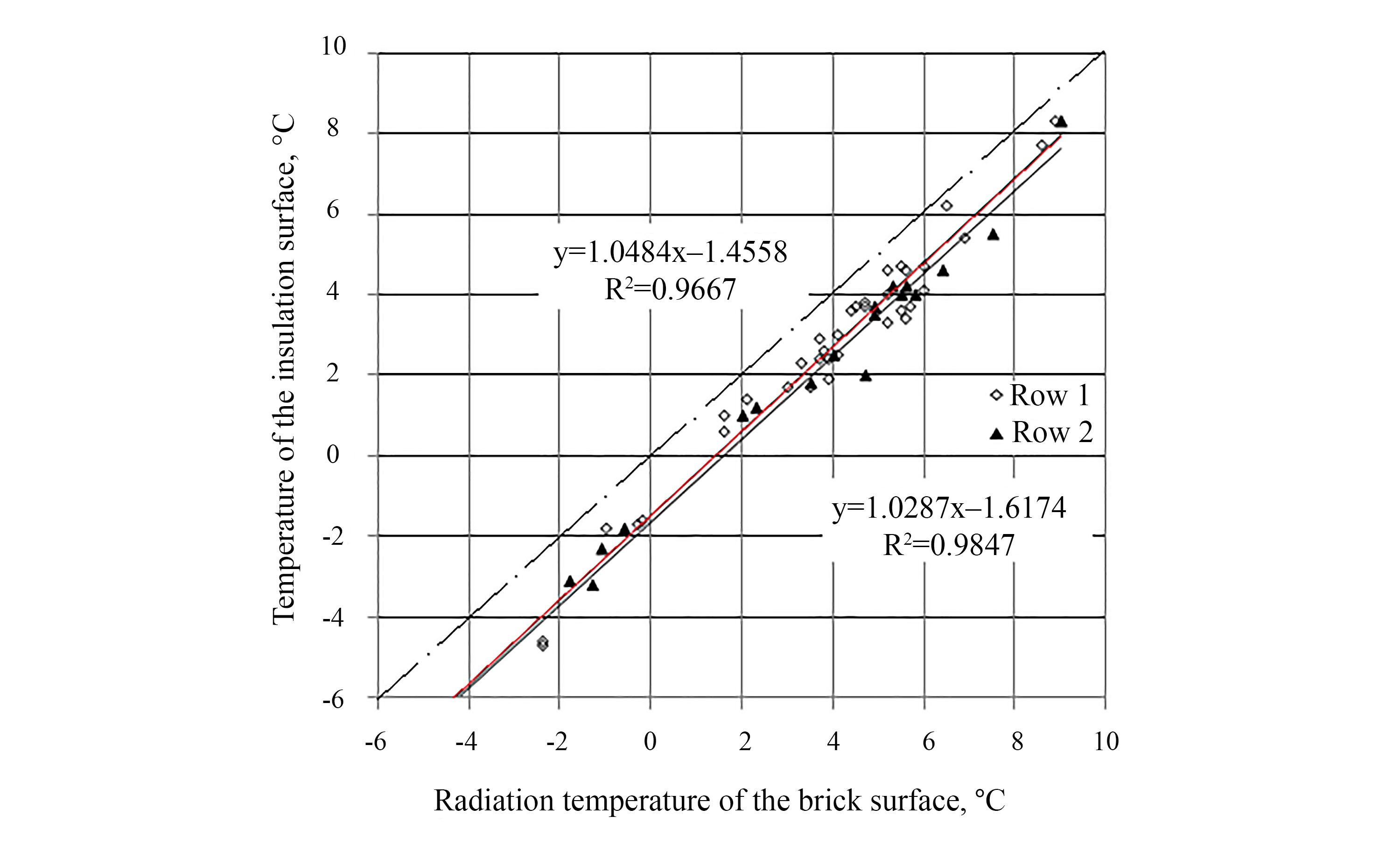Утеплення багатоповерхових житлових будинків на територіях міських громад та визначення його енергоекологічної ефективності
DOI:
https://doi.org/10.15587/2706-5448.2023.290329Ключові слова:
екологічна небезпека систем теплопостачання, методи визначення викидів забруднюючих речовин в атмосферу, утеплення будівельАнотація
Об'єктом дослідження є система «котельня – споживачі тепла – довкілля», що обумовлена, зокрема, високим споживанням палива міськими котельнями, обслуговуючи багатоповерхові житлові будинки, серед яких значна кількість будівель застарілого житлового фонду, які відрізняються низьким рівнем енергозбереження.
Одним з найбільш проблемних місць є підвищення викидів забруднюючих речовин і парникових газів в атмосферу котлоагрегатами, та ішими енергетичними установками, особливо під час опалювального сезону.
В ході дослідження використовувалися оцінка і аналіз рівня забруднення атмосфери міста викидами котелень з урахуванням фонового забруднення та аналіз нормативного розрахункового методу визначення викидів забруднюючих речовин в атмосферу з енергетичних установок. Також дано теоретичне обґрунтування методу оперативного визначення поточних викидів міських котелень та показників їх енергоекологічної ефективності за поточними добовими витратами палива, що реєструються щодоби протягом усього опалювального сезону, з одночасною оцінкою енергетичної ефективності використання палива та ступеню екологічної небезпеки викидів. Суть методу полягає у використанні запровадженого авторами показника (енергоекологічного індексу) – K. Цей показник одночасно характеризує кратність перевищення, як поточних витрат палива, так і відповідних поточних викидів забруднюючих речовин котельнею, відносно їх відлікових (опорних) значень, визначених одноразово на початку опалювального сезону при температурі атмосферного повітря близько 8 °С. Запропонований температурних метод визначення індексу K до і після впровадження в системі «котельня – споживачі тепла – довкілля» як ресурсозберігаючих технологій, так і технологій захисту атмосфери від викидів, дозволяє оцінювати їх ефективність за рівнем зниження величини індексу, порівняно з попереднім його значенням, тобто до впровадження, отриманим в аналогічних умовах.
Доведено, що для отримання відчутного на рівні великого міста енергоекологічного ефекту від її технології утеплення стін будинків необхідне її масове централізоване впровадження, як для окремих багатоповерхових будинків, так і в масштабі існуючих житлових мікрорайонів. Для реконструкції існуючих фасадів пропонується використання поточних промислових технологій утеплення стін будинків, що застосовують в новобудовах, які засновані на використанні мінеральної вати, зокрема ISOVERу-штукатурного. Утеплення стін ISOVERом-штукатурним матиме такі переваги порівняно з пінопластом: коефіцієнт теплопровідності – 0,034 Вт/м·К, проти 0,048 Вт/м·К для пінопласту. При застосуванні плит товщиною 100 мм ISOVERа-штукатурного очікується зниження втрат тепла до приблизно 2,8 %, проти 2,17 %, отриманих для пінопласту, що забезпечить відповідно більший енергоекологічний ефект.
Посилання
- Dolinsky, A. A. (2006). Energy saving and ecological problems of power. Nauka ta inovatsiia, 2 (2), 19–29. Available at: http://dspace.nbuv.gov.ua/bitstream/handle/123456789/113550/03-Dolinsky.pdf?sequence=1
- Stepova, O. V. (Ed.) (2023). Ekolohiia. dovkillia. enerhozberezhennia. 2023. Poltava: NUPP imeni Yuriia Kondratiuka, 246. Available at: https://ela.kpi.ua/bitstream/123456789/53714/1/Malovidkhodna_tekhnolohiia_znezaliznennia_vody.pdf
- O’Regan, A. C., Nyhan, M. M. (2023). Towards sustainable and net-zero cities: A review of environmental modelling and monitoring tools for optimizing emissions reduction strategies for improved air quality in urban areas. Environmental Research, 231, 116242. doi: https://doi.org/10.1016/j.envres.2023.116242
- Qin, Q., Gosselin, L. (2023). Multiobjective optimization and analysis of low-temperature district heating systems coupled with distributed heat pumps. Applied Thermal Engineering, 230, 120818. doi: https://doi.org/10.1016/j.applthermaleng.2023.120818
- Caracci, E., Canale, L., Buonanno, G., Stabile, L. (2022). Sub-micron particle number emission from residential heating systems: A comparison between conventional and condensing boilers fueled by natural gas and liquid petroleum gas, and pellet stoves. Science of The Total Environment, 827, 154288. doi: https://doi.org/10.1016/j.scitotenv.2022.154288
- Eynard, J., Grieu, S., Polit, M. (2012). Predictive control and thermal energy storage for optimizing a multi-energy district boiler. Journal of Process Control, 22 (7), 1246–1255. doi: https://doi.org/10.1016/j.jprocont.2012.05.011
- You, Z., de-Borja-Torrejon, M., Danzer, P., Nouman, A., Hemmerle, C., Tzscheutschler, P., Goebel, C. (2023). Cost-effective CO2 abatement in residential heating: A district-level analysis of heat pump deployment. Energy and Buildings, 300, 113644. doi: https://doi.org/10.1016/j.enbuild.2023.113644
- Kolesnyk, V. E., Moniuk, I. V. (2023). Otsinka vtraty tepla typovym p’iatypoverkhovym zhytlovym budynkom yak chynnyka ekolohichnoi bezpeky mista. Challenges and Issues of Modern Science. Available at: https://fti.dp.ua/conf/2023/05238-1650/
- Enerhetychna efektyvnist budivel. Metod rozrakhunku enerhospozhyvannia pry opalenni, okholodzhenni, ventyliatsii, osvitlenni ta hariachomu vodopostachanni (2015). DSTU B A.2.2-12:2015. Nakaz Minrehionu Ukrainy No. 178. 27.07.2015.
- Kolesnyk, V., Pavlуchenko, A., Moniuk, I. (2020). Assessment of resource-saving and environmental effects in the system «boiler room – heat consumers – environment» from insulation of external walls of houses. Collection of Research Papers of the National Mining University, 61, 116–128. doi: https://doi.org/10.33271/crpnmu/61.116
- Rehionalnoi dopovidi pro stan navkolyshnoho pryrodnoho seredovyshcha v Dnipropetrovskii oblasti za 2021 rik. Dnipro, 304. Available at: https://adm.dp.gov.ua/storage/app/media/Pro%20oblast/Ekolohiia/Rehionalna%20dopovid%20ta%20Ekolohichnyi%20pasport/Rehionalna%20dopovid%20pro%20stan%20navkolyshnoho%20pryrodnoho%20seredovyshcha%20v%20Dnipr.obl./REHIONALNA%20DOPOVID%20pro%20stan%20navkolyshnoho%20pryrodnoho%20seredovyshcha%20u%202021%20rotsi.pdf

##submission.downloads##
Опубліковано
Як цитувати
Номер
Розділ
Ліцензія
Авторське право (c) 2023 Iryna Moniuk

Ця робота ліцензується відповідно до Creative Commons Attribution 4.0 International License.
Закріплення та умови передачі авторських прав (ідентифікація авторства) здійснюється у Ліцензійному договорі. Зокрема, автори залишають за собою право на авторство свого рукопису та передають журналу право першої публікації цієї роботи на умовах ліцензії Creative Commons CC BY. При цьому вони мають право укладати самостійно додаткові угоди, що стосуються неексклюзивного поширення роботи у тому вигляді, в якому вона була опублікована цим журналом, але за умови збереження посилання на першу публікацію статті в цьому журналі.








